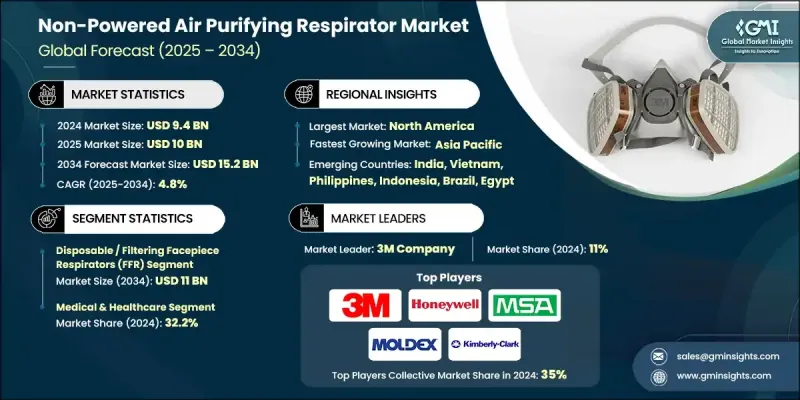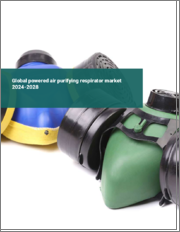
|
시장보고서
상품코드
1844314
비동력 공기 정화 호흡기 시장 기회, 성장 촉진요인, 산업 동향 분석 및 예측(2025-2034년)Non-Powered Air Purifying Respirator Market Opportunity, Growth Drivers, Industry Trend Analysis, and Forecast 2025 - 2034 |
||||||
세계의 비동력 공기 정화 호흡기 시장은 2024년에 94억 달러로 평가되었고, CAGR 4.8%로 성장하여 2034년에는 152억 달러에 이를 것으로 예측됩니다.

산업 안전에 대한 의무 강화, 작업장 공기질에 대한 인식 증가, 코로나19 이후 공기 감염 건강 위험에 대한 관심 증가 등이 성장을 가속하는 요인으로 작용하고 있습니다. 모든 분야의 고용주들은 진화하는 안전 기준에 따라 호흡보호구를 우선시하는 경향이 점점 더 커지고 있습니다. 북미, 유럽, 아시아태평양 기관에서 도입한 규제 프레임워크가 더욱 엄격해지면서 재사용 가능한 호흡보호구와 일회용 호흡보호구 모두 더 많이 채택되고 있습니다. 이러한 발전은 근로자의 안전과 환경에 대한 전 세계적인 책임과 함께 일관된 시장 모멘텀을 촉진하고 있습니다.
| 시장 범위 | |
|---|---|
| 개시 연도 | 2024년 |
| 예측 연도 | 2025-2034년 |
| 시장 규모 | 94억 달러 |
| 예측 금액 | 152억 달러 |
| CAGR | 4.8% |
팬데믹 발생 이후, 비동력 APR, 특히 필터가 달린 면체 호흡보호구는 산업안전 프로그램의 필수품이 되었습니다. BIS(인도), CE(유럽), NIOSH(미국) 등의 기관이 공기 안전 가이드라인을 업데이트하면서 제조업체들은 수요가 증가하고 있습니다. 보호장비를 많이 소비하는 분야에서는 일회용에서 재사용 가능한 엘라스토머 인공호흡기로의 전환이 진행되고 있습니다. 제약, 화학 등 업계에서는 다양한 공기 중 위협에 대한 적합성과 높은 적응성으로 인해 풀 페이스 엘라스토머 호흡보호구의 인기가 높아지고 있습니다. 또한, 비용 효율성과 환경적 지속가능성으로 인해 이러한 인공호흡기는 장기간 사용할 수 있는 실용적인 선택이 되었습니다.
필터링 면체 호흡기 분야는 2024년에 67억 달러, 2034년에는 110억 달러에 달할 것으로 예상되며, 연평균 5%의 성장률을 보일 것으로 예측됩니다. 이 일회용 유닛은 저렴한 가격, 사용 편의성, 높은 생산 확장성으로 인해 시장을 독점하고 있습니다. 대량 생산으로 인해 많은 공급업체들이 대당 1달러 이하의 가격을 책정하고 있으며, 대규모 배포가 필요한 분야에서 사용하기에 적합합니다. 안정적인 성능과 신뢰성으로 인해 특히 단기간 사용과 비용 절감이 최우선인 분야에서 높은 수요를 확보하고 있습니다.
용도별로는 의료 및 헬스케어 분야가 2024년 32.2%의 점유율을 차지했습니다. 이러한 우위는 이 부문이 병원, 연구소 및 기타 임상 환경에서 일선 전문가를 보호하는 데 필수적인 역할을 하고 있기 때문입니다. 특히 감염된 환경에서 치료 및 진단 절차 중 노출 위험을 줄일 수 있는 필터링된 면체 호흡보호구는 의료 분야에서 표준 장비로 자리 잡았습니다.
미국 비동력 공기 정화 호흡기 2024년 시장 규모는 30억 5,000만 달러로 2034년에는 48억 1,000만 달러에 달할 것으로 예상되며, CAGR 4.7%를 보일 것으로 예측됩니다. 이 시장은 정부가 지원하는 국내 생산 전략으로 인해 제약 및 생명공학 제조업 수요가 지속적으로 확대되고 있습니다. 국가 위생 비축은 현재 호흡기 재고를 다양화하여 기존의 일회용 제품 외에도 재사용 가능한 옵션도 포함하고 있어 장기적인 대비가 더욱 중요해지고 있습니다. 공공 부문의 조달 동향은 대량 구매 환경에서 재사용 가능한 APR의 인지도를 높이는 데 도움이 되고 있습니다.
비동력 공기청정 호흡기 시장을 형성하는 주요 기업으로는 Kimberly-Clark Corporation, MSA Safety Incorporated, 3M Company, Honeywell International Inc. 등이 있습니다. 비동력 공기청정 호흡보호기 시장에서의 입지를 굳히기 위해 각 업체들은 다양한 산업 분야에 맞춘 첨단 다중 오염 솔루션으로 제품 라인을 적극적으로 확장하고 있습니다. 혁신은 제품 수명을 연장하는 교체 가능한 필터를 갖춘 가볍고 재사용 가능한 설계에 집중되어 있습니다. 민관 양 부문의 급증하는 수요에 대응하기 위해 많은 기업들이 확장 가능한 제조에 투자하고 있습니다. 정부 및 대량 조달 기관과의 제휴는 장기 공급 계약 확보에 도움이 되고 있습니다. 이와 함께 기업들은 세계 시장 진입을 간소화하기 위해 규제 인증과 컴플라이언스를 중시하고 있습니다.
목차
제1장 조사 방법과 범위
제2장 주요 요약
제3장 업계 인사이트
- 생태계 분석
- 공급업체 상황
- 이익률
- 각 단계에서의 부가가치
- 밸류체인에 영향을 미치는 요인
- 파괴적 변화
- 업계에 대한 영향요인
- 성장 촉진요인
- 업계의 잠재적 리스크&과제
- 시장 기회
- 성장 가능성 분석
- 규제 상황
- 북미
- 유럽
- 아시아태평양
- 라틴아메리카
- 중동 및 아프리카
- Porter의 Five Forces 분석
- PESTEL 분석
- 가격 동향
- 지역별
- 제품별
- 향후 시장 동향
- 기술 및 혁신 상황
- 현재 기술 동향
- 신기술
- 특허 상황
- 무역 통계
- 주요 수입국
- 주요 수출국
(주 : 무역 통계는 주요 국가에 한해 제공됩니다.)
- 지속가능성과 환경 측면
- 지속가능한 실천
- 폐기물 감축 전략
- 생산 에너지 효율
- 친환경 이니셔티브
- 탄소발자국 고려
제4장 경쟁 구도
- 서론
- 기업의 시장 점유율 분석
- 지역별
- 북미
- 유럽
- 아시아태평양
- 라틴아메리카
- 중동 및 아프리카
- 지역별
- 기업 매트릭스 분석
- 주요 시장 기업의 경쟁 분석
- 경쟁 포지셔닝 매트릭스
- 주요 발전
- 인수합병(M&A)
- 파트너십 및 협업
- 신제품 발매
- 확장 계획
제5장 시장 추산·예측 : 제품별, 2021년-2034년
- 주요 동향
- 일회용/필터식 페이스피스 호흡기(FFR)
- N시리즈(N95, N99, N100)
- R시리즈(R95, R99, R100)
- P시리즈(P95, P99, P100)
- 특수 FFR(서지칼 N95, 밸브 붙어, 악취 제어 FFR)
- 재이용 가능한 비동력 공기 정화 호흡기(APR)
- 반면형 엘라스토머 호흡기
- 풀페이스형 엘라스토머 호흡기
- 멀티 가스/증기 APR
- 입자상 APR(재이용 가능)
- 복합 APR(가스/증기+입자상 물질 보호)
- 카트리지와 필터
- 가스/증기 카트리지
- 미립자 필터(P100, HEPA 등)
- 콤비네이션 카트리지(이중 목적 필터)
- 특수 필터(악취 제거 필터, 수은 증기 필터 등)
- 교체 부품 및 액세서리
제6장 시장 추산·예측 : 용도별, 2021년-2034년
- 주요 동향
- 의료 및 헬스케어
- 병원 및 클리닉
- 응급 의료 서비스(EMS)
- 연구소
- 공중위생 기관
- 화학제품 및 석유화학제품
- 화학 처리 유닛
- 정유소 및 석유화학 플랜트
- 의약품 제조
- 클린룸 환경
- 조제 약국
- 산업 제조업
- 자동차
- 일렉트로닉스
- 건설
- 금속 가공
- 목공
- 군 및 방위
- 군
- 국토안보
- 방위 계약업체
- 식품 및 음료 가공
- 육류 및 가금육 공장
- 유제품 및 음료
- 포장식품 제조
- 소방 및 긴급 대응 사람
- 소방 대원
- 위험물 팀
- 채굴과 터널 공사
- 석탄 채굴
- 금속 광석 채굴
- 채석
- 석유 및 가스
- 해양 시추 플랫폼
- 육상 시추 장비
- 유지관리 크루
- 기타
제7장 시장 추산·예측 : 유통 채널별, 2021년-2034년
- 주요 동향
- 온라인
- OEM E-Commerce 포털
- 써드파티 마켓플레이스
- 구독 기반 PPE 조달 플랫폼
- 오프라인
- 직접 판매
- 산업용 품점
- 안전 기기판매점
- 소매 체인
- 정부 입찰 및 기관 조달
제8장 시장 추산·예측 : 지역별, 2021년-2034년
- 주요 동향
- 북미
- 미국
- 캐나다
- 유럽
- 독일
- 영국
- 프랑스
- 스페인
- 이탈리아
- 아시아태평양
- 중국
- 인도
- 일본
- 호주
- 한국
- 라틴아메리카
- 브라질
- 멕시코
- 아르헨티나
- 중동 및 아프리카
- 사우디아라비아
- 남아프리카공화국
- 아랍에미리트(UAE)
제9장 기업 개요
- 3M Company
- Alpha Pro Tech
- Avon Protection
- Cam Lock Ltd.
- Delta Plus Group
- DuPont de Nemours, Inc.
- E.D. Bullard Company
- ERB Industries, Inc.
- Honeywell International Inc.
- Imbema
- Kimberly-Clark Corporation
- Moldex-Metric, Inc.
- MSA Safety Incorporated
- Polison Corporation
- Prestige Ameritech
- Protective Industrial Products(PIP)
- RSG Safety BV
- Scandia Gear Europe BV
- Shanghai Dasheng Health Products Manufacture Co., Ltd.
- Shigematsu Works Co., Ltd.
The Global Non-Powered Air Purifying Respirator Market was valued at USD 9.4 billion in 2024 and is estimated to grow at a CAGR of 4.8% to reach USD 15.2 billion by 2034.

Growth is fueled by tighter industrial safety mandates, increasing awareness of workplace air quality, and heightened concern about airborne health risks following the COVID-19 pandemic. Employers across sectors are increasingly prioritizing respiratory protection in compliance with evolving safety standards. Regulatory frameworks introduced by agencies across North America, Europe, and Asia-Pacific have become more stringent, leading to greater adoption of both reusable and disposable respiratory protection devices. These developments, combined with the global push for worker safety and environmental responsibility, are driving consistent market momentum.
| Market Scope | |
|---|---|
| Start Year | 2024 |
| Forecast Year | 2025-2034 |
| Start Value | $9.4 Billion |
| Forecast Value | $15.2 Billion |
| CAGR | 4.8% |
Since the onset of the pandemic, non-powered APRs, particularly filtering facepiece respirators, have become a staple in occupational safety programs. With organizations such as BIS (India), CE (Europe), and NIOSH (U.S.) updating air safety guidelines, manufacturers are experiencing increased demand. A shift is emerging from single use to reusable elastomeric respirators in sectors that consume high volumes of protective equipment. In industries such as pharmaceuticals and chemicals, full-face elastomeric respirators are gaining traction due to their compatibility with varied airborne threats and enhanced adaptability. Cost efficiency and environmental sustainability also make these respirators a practical choice for long-term use.
The filtering facepiece respirator segment generated USD 6.7 billion in 2024 and will reach USD 11 billion by 2034, growing at a CAGR of 5%. These disposable units dominate the market thanks to their affordability, ease of use, and high production scalability. Bulk production enables pricing below USD 1 per unit for many suppliers, positioning them well for use in sectors requiring large-scale deployment. Their consistent performance and reliability ensure strong demand, particularly where short-term use and cost containment are top priorities.
In terms of application, the medical and healthcare segment held a 32.2% share in 2024. This dominance stems from the segment's essential role in safeguarding frontline professionals across hospitals, laboratories, and other clinical environments. Filtering facepiece respirators are standard equipment in healthcare due to their ability to reduce exposure risks during treatment and diagnostic procedures, especially in infectious environments.
United States Non-Powered Air Purifying Respirator Market generated USD 3.05 billion in 2024 and is projected to reach USD 4.81 billion by 2034, growing at a CAGR of 4.7%. The market is being pushed by strong demand from pharmaceutical and biotech manufacturing, which continues to expand due to government-supported domestic production strategies. National health stockpiles are now diversifying respiratory inventory to include reusable options alongside traditional disposables, reinforcing the importance of long-term preparedness. Public sector procurement trends are helping elevate the profile of reusable APRs in high-volume purchasing environments.
Prominent players shaping the Non-Powered Air Purifying Respirator Market include Kimberly-Clark Corporation, MSA Safety Incorporated, 3M Company, Honeywell International Inc., and Moldex-Metric, Inc. To boost their foothold in the Non-Powered Air Purifying Respirator Market, companies are actively expanding their product lines with advanced, multi-contaminant solutions tailored for various industries. Innovation is focused on lightweight, reusable designs with interchangeable filters that extend product lifespan. Many are investing in scalable manufacturing to meet surging demand from both public and private sectors. Partnerships with governments and bulk procurement agencies help secure long-term supply contracts. In parallel, firms are emphasizing regulatory certifications and compliance to streamline entry into global markets.
Table of Contents
Chapter 1 Methodology & Scope
- 1.1 Market scope and definition
- 1.2 Research design
- 1.2.1 Research approach
- 1.2.2 Data collection methods
- 1.3 Data mining sources
- 1.3.1 Global
- 1.3.2 Regional/Country
- 1.4 Base estimates and calculations
- 1.4.1 Base year calculation
- 1.4.2 Key trends for market estimation
- 1.5 Primary research and validation
- 1.5.1 Primary sources
- 1.6 Forecast model
- 1.7 Research assumptions and limitations
Chapter 2 Executive Summary
- 2.1 Industry 360° synopsis
- 2.2 Key market trends
- 2.2.1 Regional
- 2.2.2 Product
- 2.2.3 Application
- 2.2.4 Distribution channel
- 2.3 TAM Analysis, 2025-2034
- 2.4 CXO perspectives: Strategic imperatives
- 2.4.1 Executive decision points
- 2.4.2 Critical success factors
- 2.5 Future Outlook and Strategic Recommendations
Chapter 3 Industry Insights
- 3.1 Industry ecosystem analysis
- 3.1.1 Supplier Landscape
- 3.1.2 Profit Margin
- 3.1.3 Value addition at each stage
- 3.1.4 Factor affecting the value chain
- 3.1.5 Disruptions
- 3.2 Industry impact forces
- 3.2.1 Growth drivers
- 3.2.2 Industry pitfalls and challenges
- 3.2.3 Market opportunities
- 3.3 Growth potential analysis
- 3.4 Regulatory landscape
- 3.4.1 North America
- 3.4.2 Europe
- 3.4.3 Asia Pacific
- 3.4.4 Latin America
- 3.4.5 Middle East & Africa
- 3.5 Porter’s analysis
- 3.6 PESTEL analysis
- 3.7 Price trends
- 3.7.1 By region
- 3.7.2 By product
- 3.8 Future market trends
- 3.9 Technology and Innovation landscape
- 3.9.1 Current technological trends
- 3.9.2 Emerging technologies
- 3.10 Patent Landscape
- 3.11 Trade statistics
- 3.11.1 Major importing countries
- 3.11.2 Major exporting countries
( Note: the trade statistics will be provided for key countries only)
- 3.12 Sustainability and Environmental Aspects
- 3.12.1 Sustainable Practices
- 3.12.2 Waste Reduction Strategies
- 3.12.3 Energy Efficiency in Production
- 3.12.4 Eco-friendly Initiatives
- 3.13 Carbon Footprint Considerations
Chapter 4 Competitive Landscape, 2024
- 4.1 Introduction
- 4.2 Company market share analysis
- 4.2.1 By region
- 4.2.1.1 North America
- 4.2.1.2 Europe
- 4.2.1.3 Asia Pacific
- 4.2.1.4 LATAM
- 4.2.1.5 MEA
- 4.2.1 By region
- 4.3 Company matrix analysis
- 4.4 Competitive analysis of major market players
- 4.5 Competitive positioning matrix
- 4.6 Key developments
- 4.6.1 Mergers & acquisitions
- 4.6.2 Partnerships & collaborations
- 4.6.3 New Product Launches
- 4.6.4 Expansion Plans
Chapter 5 Market Estimates and Forecast, By Product, 2021 - 2034 (USD Billion) (Units)
- 5.1 Key trends
- 5.2 Disposable / Filtering Facepiece Respirators (FFR)
- 5.2.1 N-Series (N95, N99, N100)
- 5.2.2 R-Series (R95, R99, R100)
- 5.2.3 P-Series (P95, P99, P100)
- 5.2.4 Specialty FFRs (Surgical N95, Valved, Odor-Control FFRs)
- 5.3 Reusable Non-Powered Air Purifying Respirators (APR)
- 5.3.1 Half Facepiece Elastomeric Respirators
- 5.3.2 Full Facepiece Elastomeric Respirators
- 5.3.3 Multi-Gas/Vapor APRs
- 5.3.4 Particulate APRs (Reusable)
- 5.3.5 Combination APRs (Gas/Vapor + Particulate Protection)
- 5.4 Cartridges and Filters
- 5.4.1 Gas/Vapor Cartridges
- 5.4.2 Particulate Filters (P100, HEPA, etc.)
- 5.4.3 Combination Cartridges (Dual-purpose filters)
- 5.4.4 Specialized Filters (Nuisance Odor Filters, Mercury Vapor, etc.)
- 5.4.5 Replacement Parts & Accessories
Chapter 6 Market Estimates and Forecast, By Application, 2021 - 2034 (USD Billion) (Units)
- 6.1 Key trends
- 6.2 Medical & Healthcare
- 6.2.1 Hospitals & Clinics
- 6.2.2 Emergency Medical Services (EMS)
- 6.2.3 Laboratories
- 6.2.4 Public Health Agencies
- 6.3 Chemical & Petrochemical
- 6.3.1 Chemical Processing Units
- 6.3.2 Refineries & Petrochemical Plants
- 6.4 Pharmaceutical Manufacturing
- 6.4.1 Cleanroom Environments
- 6.4.2 Compounding Pharmacies
- 6.5 Industrial Manufacturing
- 6.5.1 Automotive
- 6.5.2 Electronics
- 6.5.3 Construction
- 6.5.4 Metal Fabrication
- 6.5.5 Woodworking
- 6.6 Military & Defense
- 6.6.1 Armed Forces
- 6.6.2 Homeland Security
- 6.6.3 Defense Contractors
- 6.7 Food & Beverage Processing
- 6.7.1 Meat & Poultry Plants
- 6.7.2 Dairy & Beverage
- 6.7.3 Packaged Food Manufacturing
- 6.8 Fire Services & Emergency Responders
- 6.8.1 Firefighters
- 6.8.2 Hazardous Material Teams
- 6.9 Mining & Tunneling
- 6.9.1 Coal Mining
- 6.9.2 Metal Ore Mining
- 6.9.3 Quarrying
- 6.10 Oil & Gas
- 6.10.1 Offshore Drilling Platforms
- 6.10.2 Onshore Rigs
- 6.10.3 Maintenance Crews
- 6.11 Others
Chapter 7 Market Estimates and Forecast, By Distribution Channel, 2021 - 2034 (USD Billion) (Units)
- 7.1 Key trends
- 7.2 Online
- 7.2.1 OEM E-commerce Portals
- 7.2.2 Third-party Marketplaces
- 7.2.3 Subscription-based PPE Procurement Platforms
- 7.3 Offline
- 7.3.1 Direct Sales
- 7.3.2 Industrial Supply Stores
- 7.3.3 Safety Equipment Dealers
- 7.3.4 Retail Chains
- 7.3.5 Government Tenders & Institutional Procurement
Chapter 8 Market Estimates and Forecast, By Region, 2021 - 2034 (USD Billion) (Units)
- 8.1 Key trends
- 8.2 North America
- 8.2.1 U.S.
- 8.2.2 Canada
- 8.3 Europe
- 8.3.1 Germany
- 8.3.2 UK
- 8.3.3 France
- 8.3.4 Spain
- 8.3.5 Italy
- 8.4 Asia Pacific
- 8.4.1 China
- 8.4.2 India
- 8.4.3 Japan
- 8.4.4 Australia
- 8.4.5 South Korea
- 8.5 Latin America
- 8.5.1 Brazil
- 8.5.2 Mexico
- 8.5.3 Argentina
- 8.6 Middle East and Africa
- 8.6.1 Saudi Arabia
- 8.6.2 South Africa
- 8.6.3 UAE
Chapter 9 Company Profiles
- 9.1 3M Company
- 9.2 Alpha Pro Tech
- 9.3 Avon Protection
- 9.4 Cam Lock Ltd.
- 9.5 Delta Plus Group
- 9.6 DuPont de Nemours, Inc.
- 9.7 E.D. Bullard Company
- 9.8 ERB Industries, Inc.
- 9.9 Honeywell International Inc.
- 9.10 Imbema
- 9.11 Kimberly-Clark Corporation
- 9.12 Moldex-Metric, Inc.
- 9.13 MSA Safety Incorporated
- 9.14 Polison Corporation
- 9.15 Prestige Ameritech
- 9.16 Protective Industrial Products (PIP)
- 9.17 RSG Safety BV
- 9.18 Scandia Gear Europe BV
- 9.19 Shanghai Dasheng Health Products Manufacture Co., Ltd.
- 9.20 Shigematsu Works Co., Ltd.















